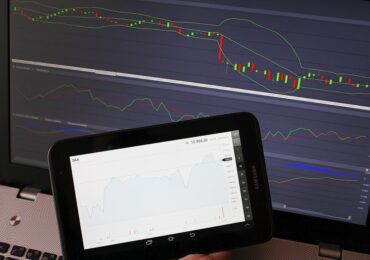If you’re new to online trading, the term “margin” might sound confusing. But don’t worry; this blog is here to explain it in the simplest way possible. Whether you’re trading from India or anywhere in the APAC region, understanding how margin works is key to making smarter trading decisions.
In CFD trading, the margin is the small amount of money you need to deposit to open a larger position. Instead of paying the full price for a stock or asset, you just pay a portion of it. This gives you more flexibility and buying power but also comes with greater responsibility.
What Is Margin and Why Does It Matter?
Think of the margin as a safety deposit. When you open a CFD trade, you don’t actually own the asset. Instead, you’re making a deal to trade the difference in price from when you open and close the position. To do this, you pay a percentage of the trade’s total value upfront.
For example, if you’re trading a stock worth $5,000 and the margin requirement is 10%, you only need to deposit $500. This lets you control the full $5,000 value but with much less capital.
This is powerful, especially for traders who want to make the most of smaller investments. If the market is against your position, your loss will be larger as well, because you’re trading a larger amount than you actually paid for.
How Brokers Calculate Margin?
Margin requirements are set by the broker and depend on the asset you’re trading. More stable assets often have lower margin requirements, while volatile ones may require more.
Here’s a quick example:
- 5% margin on a $10,000 trade = $500 deposit
- 20% margin on the same trade = $2,000 deposit
Platforms will usually show you the exact margin needed before you place a trade. Always take a second to review it.
What Is a Margin Call?
A margin call happens when your account balance drops too low to support your open trades. This means your broker may ask you to add more funds to avoid your trade being closed.
Here’s how to avoid margin calls:
- Use stop-loss orders to limit your losses
- Monitor your trades regularly—especially if you’re trading during off-hours or global market sessions.
- Avoid putting all your funds into one trade.
If you’re trading from India or any APAC region, remember that time zone differences can lead to unexpected price changes while you’re offline. Always protect your positions.
Tips for Smart Margin Use
Margin can work in your favor, but only when used wisely. Here are a few things to keep in mind:
- Don’t over-leverage. More leverage means higher risk.
- Start small. Learn how margin works with lower amounts.
- Keep track. Always know how much margin you’re using and how much is left.
- Diversify. Spread your trades across different assets to manage risk.
Most trading platforms come with dashboards that show your margin level, available funds, and real-time updates. Use these tools to stay on top of your account.
Margin trading through CFDs offers big opportunities but requires careful planning. Once you understand how margin works—how much is needed, how to manage it, and how to avoid margin calls—you can trade more confidently. Use simple strategies, stay informed, and never risk more than you’re willing to lose. A clear margin approach can turn a risky guess into a smarter trade.
